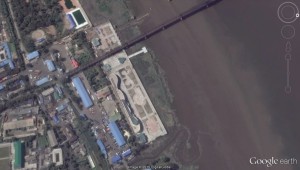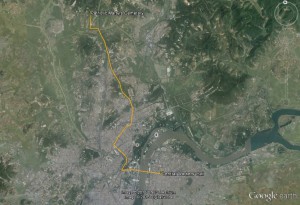Institute for Far Eastern Studies (IFES)
From early on, Kim Jong Un has attempted to strengthen his political power through emulating his grandfather, Kim Il Sung. Recently political slogans from Kim Il Sung era are reappearing.
North Korea’s propaganda website Uriminzokkirir (based in China) claimed in an article entitled “Great Victory Based on Self-Development-First Principle” (posted on January 12) that “the revolutionary spirit of self-reliance through the revolutionary historical course has sublimated into powerful policy of self-development-first principle of today that produced miraculous and dazzling reality surprising the entire world.”
In his New Year speech, Kim Jong Un used the expression “self-development-first principle” for the first time. This slogan is reminiscent of the Kim Il Sung era slogan “self-reliance.”
According to Tongil Sinbo, North Korea’s state-run weekly publication based in Japan, “self-development (jagangryok) refers to the power to empower oneself through his own strength,” and added, “the great Kim Il Sung has created our republic to be a model nation, recognized as a powerful state of self-reliance.”
Kim Jong Un’s new year’s speech emphasized the spirit of ‘self-development-first policy’: “The principle of giving priority to self-development should be maintained in building a thriving socialist country. Worship of big countries and dependence on foreign forces is the road to national ruin; self-development alone is the road to sustaining the dignity of our country and our nation and to paving a broad avenue for the revolution and construction. With affection, trust, dignity and pride in everything of our own, we should achieve the great cause of building a thriving nation and realize the people’s beautiful dreams and ideals without fail by our own efforts, technology and resources.”
Kim Il Sung, in his lifetime coined the term “jaryokgaengsaeng” or “self-reliance” to signify “self-reliance in economy” and stressed that “to build an independent national economy signifies the creation of a nation that can live on its own, a self-sufficient nation.” Kim Il Sung’s “jaryokgaengsaeng” (“self-reliance”) and Kim Jong Un’s “jagangryok” (“self-development first”) are in essence parallel terms.
Since taking the helm of leadership, Kim Jong Un has emulated the appearance of his grandfather Kim Il Sung, including his gait, clothing, and style, in order to draw loyalty from his people.
Not surprisingly, North Korean media has used the term “self-development-first principle” on a daily basis since it was first iterated in Kim Jong Un’s new year’s speech.



